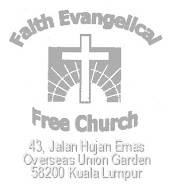Here's what happened. We were divided into 10 groups of about 3 to 4 persons each. Each group was given an empty flower pot. We were then asked to write or draw anything that came to mind on the pots.

Next, we were told to smash the pots into pieces! Ouch! The adults were a little apprehensive at first but the kids just could not wait to do the "honours"!

So, now what? We were then required to piece them back together, that's what. Okay, that's not going to be so easy.




So, armed with a glue gun, we began trying to stick the broken pieces together.

If that does not work, maybe cellophane or masking tape might...


Well, if you don't know where the pieces go, this solution may work...

Now, that is one really smashed up pot. But, no fear... with some glue, lots of cellophane tape (and patience!) and paint, it's transformed into a work of abstract pot-ty art!


Wow, this one looks like new.

This sure is one masterpiece. So creative. What was once a flower pot is now a, well... New Creation.


Another work of art...

Time to reveal the exhibits.

So, what was this exercise all about? It's about how we were once broken (we sinned) and now in the hands of the Great Potter (God), we are made anew. Pieces that are useless and do not fit anymore are discarded.
"Therefore, if anyone is in Christ, he is a new creation; the old has gone, the new has come!" - 2 Corin. 5:17
One commentator states, "For Paul, "the old" which has gone, is the condition of alienation from God and its bondage to sin. "The new" which has come is our relationship with God in Christ, a relationship which empowers us for a kind of living in which the continuing reality of sin can be overcome again and again.
To be a "new creation" is not to be perfect or faultless, or immune from anger and pain, or insulated from the tough experiences of life. Rather, to be a "new creation" is to live a life turned toward the God whose grace has reclaimed us in Christ."
(Brauch, Manfred T. Hard Sayings Of Paul. 1989. Downers Grove, IL InterVarsity Press. p. 186).
It can be concluded, therefore, that just as Adam and Eve lived unbound from sin at least for a time in the Garden of Eden we can thus live unbound from sin in Christ Jesus today.
The Arts, if used in a positive and creative way, can be a very effective means to share the Gospel and teach Biblical truths.






